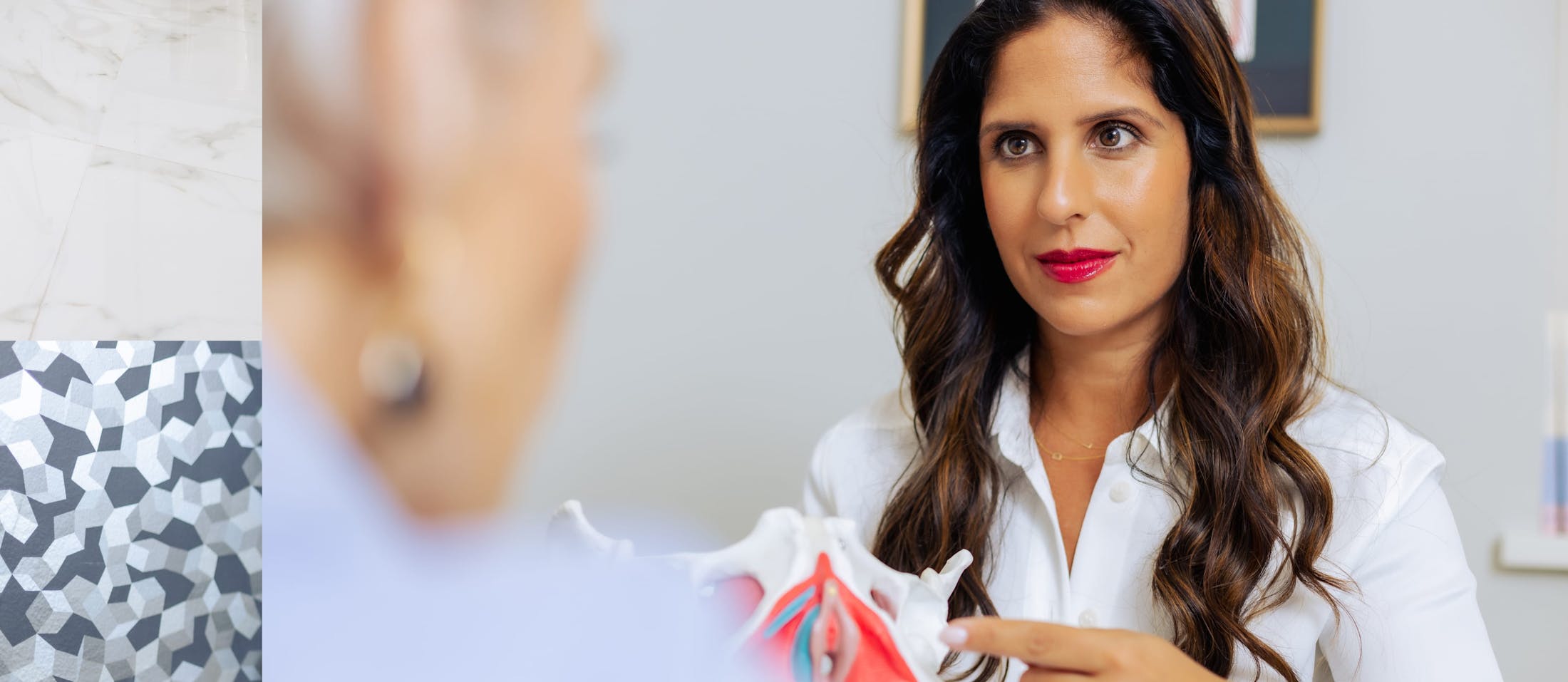
Discussing intimate health conditions like vaginismus with your partner can feel overwhelming, but it doesn't have to be.
At Pelvic Pain Doc in NYC, led by Dr. Sonia Bahlani, we understand the complexities and sensitivities surrounding women's pelvic health. Dr. Bahlani, a renowned pelvic pain specialist trained by leading pioneer Dr. Robert Moldwin, is uniquely qualified to address vaginismus through compassionate, holistic care.
Her extensive training in urology and pelvic floor disorders at prestigious institutions, including New York Presbyterian/Weill Cornell Medical Center, positions her as a trusted expert to guide you through managing and overcoming vaginismus.
How to Define Vaginismus
Vaginismus is an involuntary contraction of the pelvic floor muscles that occurs during attempts at vaginal penetration, causing significant discomfort or pain (American College of Obstetricians and Gynecologists, 2021).
The condition can prevent enjoyable sexual intercourse, tampon insertion, and routine gynecological exams. Recognizing common symptoms—such as pain during penetration, loss of sexual desire, or the inability to tolerate gynecological exams—can facilitate a clearer dialogue with your partner.
Preparing for the Conversation
- Before initiating this sensitive discussion, gather your thoughts clearly
- Consider writing down your experiences, emotions, and concerns
- This can help structure your conversation and ensure you convey important points effectively
Choosing the Right Moment
- Select a comfortable, private, and uninterrupted time to speak with your partner
- Ensuring you both are relaxed and attentive can foster openness and mutual understanding
Communication is Key
- Approach the conversation with honesty, vulnerability, and confidence
- Expressing your feelings clearly can help your partner grasp the emotional and physical impact vaginismus has on your life and relationship
- Explain that vaginismus is a medical condition influenced by factors such as medical disorders, hormonal imbalances, trauma, or relationship issues (International Society for Sexual Medicine, 2022)
Educate Your Partner
- Providing factual information about vaginismus can help alleviate confusion and misunderstandings
- Explain distinctions between primary vaginismus, where vaginal penetration has never been possible, and secondary vaginismus, where issues arise after previously successful experiences
- Understanding these nuances can help your partner empathize and better support your journey toward healing
Discuss Treatment Options Together
- Vaginismus is treatable, and discussing potential therapies can be empowering
- Dr. Bahlani employs comprehensive strategies tailored specifically to each patient, which may include pelvic floor physical therapy, biofeedback, vaginal dilators, acupuncture, trigger point injections, or BOTOX injections (National Institutes of Health, 2023)
- Including your partner in discussions about treatment fosters mutual support and active involvement in your recovery process
Encourage Open Dialogue and Patience
- Recovery from vaginismus requires patience and compassion from both partners
- Maintaining open communication about progress, setbacks, or emotional experiences can significantly strengthen your relationship during this time
Don’t Wait for Relief. Start Your Journey with Dr. Sonia Bahlani Today.
Opening up to your partner about vaginismus can strengthen your relationship and significantly support your path toward recovery. At Pelvic Pain Doc in NYC, Dr. Sonia Bahlani blends unparalleled medical expertise with compassionate, personalized care, helping women confidently overcome pelvic floor conditions like vaginismus. Take the first step towards reclaiming comfort, intimacy, and a better quality of life—book your consultation with Pelvic Pain Doc today.
References:
- American College of Obstetricians and Gynecologists (2021). "Sexual Dysfunction." www.acog.org
- International Society for Sexual Medicine (2022). "Understanding Vaginismus." www.issm.info
- National Institutes of Health (2023). "Vaginismus: Treatments and Management." www.nih.gov

